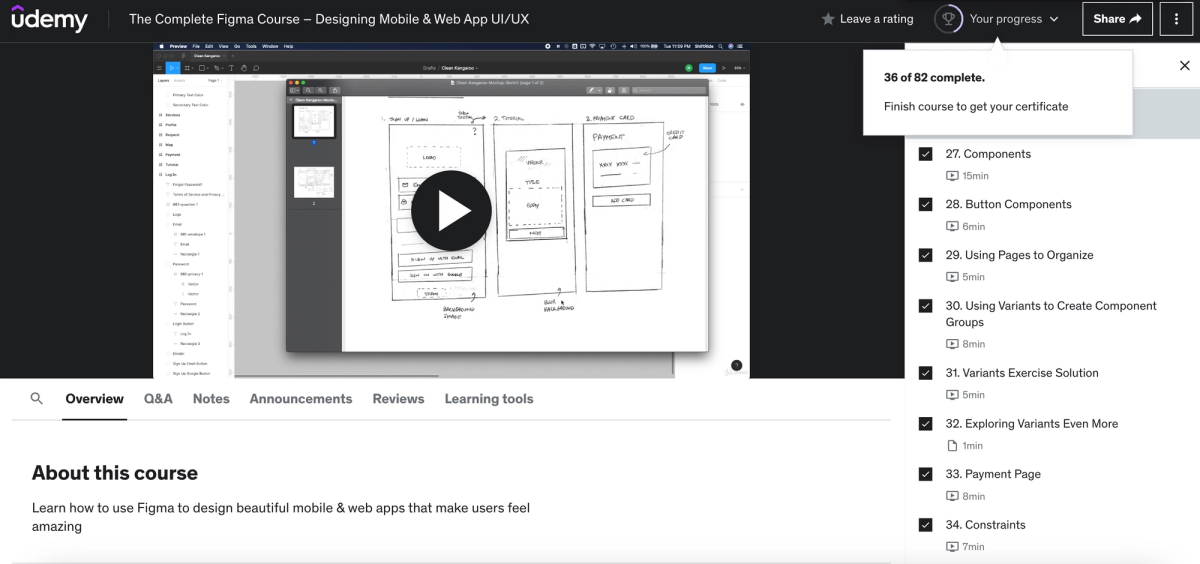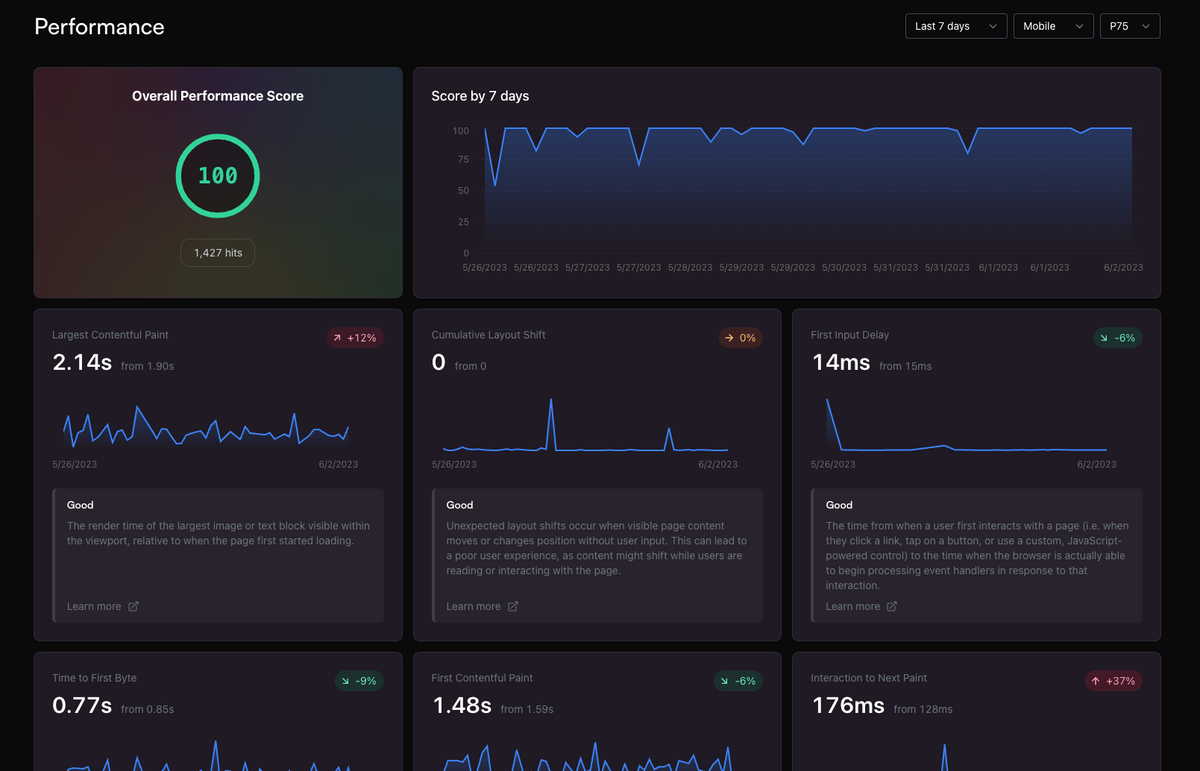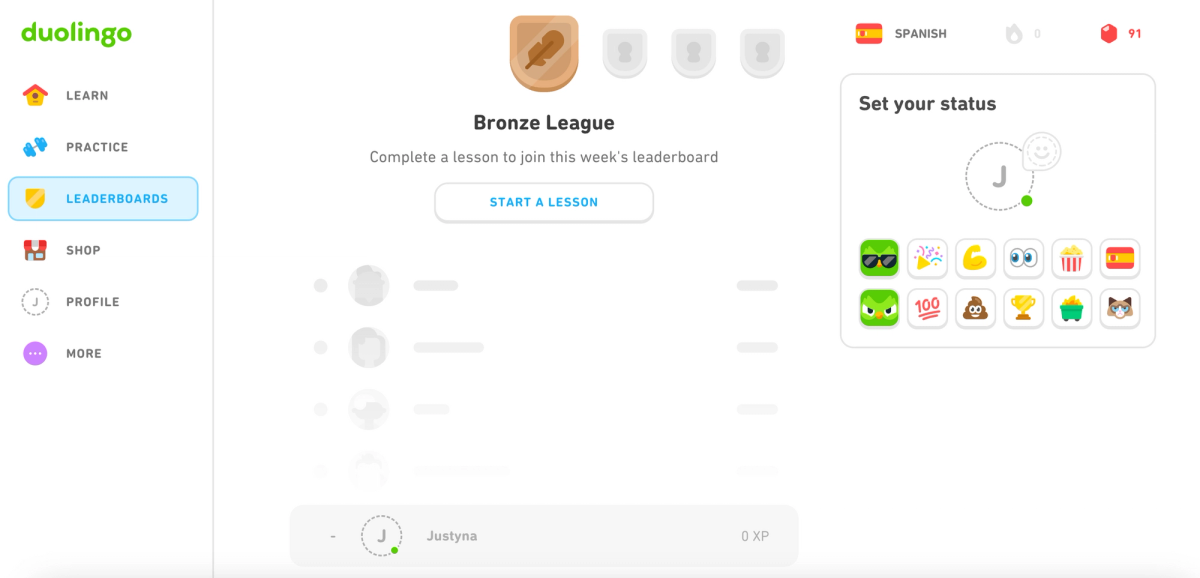The Power of Gamification in UX Design: Driving Engagement and Retention

Taiwo Sotikare is content strategist and writer in the B2B SaaS and MarTech industries.
Date added
Read time
14 minUsers love games and also love to find game-like elements in digital products. That's why gamification has become a popular modern design approach that UX designers may use to explore the thrilling nature of games.
- Gamification is a technique with which UX designers are able to boost user engagement by incorporating gameplay elements in non-gaming settings.
- Several types of gaming elements make users rewarded for their efforts and motivate them to complete a certain task: achievement badges and stickers, progress tracking, social sharing, points system, challenges and contests, personalization, virtual goods, incentives and rewards, streaks, personal challenges,
- Right gamification practices allow designers to insert gameplay elements into digital products and services successfully: setting clear goals, defining users, bringing interactive UI components, keeping it simple but making it fun, and testing if designed gamification works.
Learn more about gamification in UX design and find out how UX designers use mechanisms that work in the gaming industry to design engaging products and services.
Table of contents:
In every job that must be done, there is an element of fun. You find the fun and - SNAP - the job's a game!
Mary Poppins (“Mary Poppins” movie by Disney, 1964)
Gamification has been a buzzword among industry professionals since the 2010s, when it gained attention and started to be recognized as a viable strategy for enhancing user engagement and motivation. Gamification is exactly what it sounds like, adding an aspect of gameplay to an activity to make it more exciting.
The concept of gamification has taken center stage in today's ever-changing digital market, where user engagement and retention hold the key to the success of a product and service. Gamification has transformed UX and motivation by integrating game mechanics and components into great UX design.

What is gamification?
Gamification is the process of incorporating game elements and mechanics into non-gaming contexts to enhance user engagement, motivation, and participation. It uses game design principles, such as challenges, rewards, points, leaderboards, badges, and levels, to make activities more interactive, enjoyable, and compelling.
Gamification uses human psychology and leverages our natural inclination for competition, achievement, and rewards to drive desired behaviors and outcomes. A reward releases dopamine in the brain. By applying different types of game mechanics in areas such as education, fitness, productivity, marketing, and user experience design, gamification aims to motivate users, foster their intrinsic motivation, and create a sense of accomplishment and progression.
10 types of games to drive users engagement - real-life UX gamification examples
Gamification has spread to a variety of industries. It is increasingly used in education, healthcare, workforce training, productivity tools, and sustainability projects. It is also increasingly common for designers to use gamification to improve user experience with a product. Let's look at some gamification and game design ideas and real-world implementations from various industries.
Achievement badges and stickers
In the context of gamification and user experience design, achievement badges are:
- Virtual representations or icons are granted to individuals as recognition for completing specific tasks.
- Reaching milestones.
- Acquiring skills.
- Demonstrating accomplishments within a digital platform or application.
These virtual representations of accomplishment can transform even the most ordinary tasks into epic conquests. They unlock a profound sense of achievement and elevate the status of users within the platform. For example, they are often used in checklists to manage tasks. One of the worth-mentioned examples of it is Asana, which rewards its users with funny animated stickers when they complete several tasks.
If you're an enthusiastic user of LinkedIn, you're likely familiar with the captivating concept of achievement badges. LinkedIn Badges serve as virtual credentialing, providing users with a tangible representation of their expertise and achievements. These badges are earned by completing various tasks, acquiring new skills, and demonstrating proficiency in specific areas.
Another shining example of the effectiveness of achievement badges can be seen in the accomplishments of companies like Foursquare. Through the strategic implementation of gamification, Foursquare has successfully leveraged badges to increase user engagement and foster long-term retention. Introducing achievement badges to their mobile app propelled Foursquare's growth, catapulting it to expand exponentially in just five years.
In the context of Foursquare, achievement badges are intricately integrated with the platform's location-based features. Users are rewarded with points based on their frequency of visits to various places, and those with the most visits to a specific location are proudly bestowed the title of "mayor." For instance, in a workplace setting, the coworker who frequently graces the office space would hold the esteemed "mayor" title within Foursquare's vibrant ecosystem.
Progress tracking
Progress tracking refers to monitoring and recording users' advancement and achievements within a gamified system or experience. It involves tracking the completion of tasks, reaching milestones, earning badges, unlocking levels, or acquiring virtual rewards as users progress through the game or interactive experience.
Progress tracking and progress bar in gamification serve multiple purposes. It provides users with a clear visual representation of their journey and accomplishments, allowing them to see their growth and improvement over time. It also creates a sense of transparency and feedback, as users can easily track their current status and understand their progress toward specific goals or objectives.
At Dodonut, we use a progress bar to show our visitors the progress of their reading articles. That surely informs them about the process but also keeps them engaged.

One of the companies that have effectively harnessed the power of progress-tracking gamification is Udemy. Udemy's ingenious incorporation of gamification takes the learning experience to new heights by empowering learners to monitor their course completion status and measure their progress in a visually appealing and intuitive manner. By displaying the percentage of lectures or modules completed, learners gain a crystal-clear understanding of their journey toward mastery.
But Udemy doesn't stop there. They take the gamification aspect a step further by seamlessly integrating progress tracking with other captivating elements like a game badges and certificates. These tangible rewards collectively recognize learners' accomplishments, fueling their motivation and propelling them toward the finish line.
Social sharing
The bond between gamification and social sharing is undeniably powerful. When social features like leaderboards, the ability to share successes on social media platforms, and friendly competition among peers are integrated, users experience a profound sense of community and are motivated to surpass one another, resulting in heightened engagement.
Candy Crush, the popular game sensation, recognized the potential of this concept and seamlessly incorporated a feature that allowed users to invite and challenge their Facebook connections. This ingenious integration elevated the gaming experience to new heights as players eagerly competed against their friends, striving to outperform each other.
The impact of this solid UX gamification strategy is truly astounding. Candy Crush Saga stands as a testament to its effectiveness, boasting an astounding 73 billion hours of playtime. This remarkable achievement vividly illustrates the immense power of gamification in driving engagement and fostering long-term retention.
Points system
A points system refers to a method of assigning and accumulating points as a way to track and reward user progress within a game or gamified experience. Points can be awarded for a wide range of activities, such as completing levels, solving puzzles, achieving high scores, participating in challenges, or engaging in social interactions within the game.
The accumulation of points creates a sense of accomplishment and motivates players to continue engaging with the game to earn more points and advance. For example, we use a point system in our product Statsy that provides sustainable web analytics for its users. Besides the user behavior analysis, it also shows points about their web performance and digital carbon footprint that their website generates, which can inspire them to take action.

The captivating game mechanic of a point system serves as a powerful motivator, driving sustained engagement among users, as exemplified by the members of the Nike Training Club (NTC).
NTC employs a clever strategy of rewarding users with points, transforming their fitness journey into a captivating adventure. Points are earned by completing workouts and participating in challenges, giving users a tangible sense of progress and achievement. This gamified approach not only adds excitement to exercise but also motivates users to stick to their fitness goals and maintain an active presence while using the app.
As users accumulate points and witness their growth, a sense of accomplishment takes hold, further fueling their commitment to their fitness routines. This gamification strategy encourages users to complete challenges, set new goals, push the boundaries of their fitness journey within the NTC app, and become a loyal and dedicated user base. The impact of NTC's gamification approach is evident through an impressive 21% increase in retention rates.
Challenges and contests
The allure of challenges and contests lies in their ability to spark excitement, stimulate critical thinking, and inspire healthy competition. They create an environment where users are driven to improve their skills, surpass their limits, and strive for excellence.
Notable platforms like Kaggle and Kahoot have harnessed the power of challenges and contests to engage users in problem-solving activities, resulting in an addictive experience that fuels continuous engagement.
Kahoot, in particular, offers a gamified learning experience through its interactive quiz-based format. Students and learners of all ages can partake in educational quizzes, either individually or collaboratively in groups. These quizzes are created by teachers or other users, making learning an exciting and interactive endeavor. The competitive element is introduced through the implementation of a leaderboard system, where participants can witness their rankings and engage in a spirited race to achieve the highest scores.
By infusing gamification into the learning process, Kahoot has emerged as a global phenomenon, captivating the attention of instructors and students worldwide. Since its inception in 2013, Kahoot has experienced a remarkable surge in popularity, attracting 75% more users. With a staggering 70 million active users, Kahoot's success demonstrates the tremendous impact of gamification, challenges, and contests in driving engagement and fostering a vibrant user community.
Discover how Dodonut drives user engagement and retention by incorporating quizzes as a gamification strategy at DesignWays Conf 2022.
Personalization
In an era where users are inundated with abundant content and choices, personalization sets brands apart by offering a curated and tailored experience. Spotify's success is a compelling example of how personalization can transform UX, forging a deep connection with users and establishing long-term loyalty. This deep understanding allows Spotify to curate personalized playlists, recommendations, and radio stations that cater to each user's unique musical taste.
The true power of personalization on Spotify lies in its ability to go beyond surface-level suggestions and delve into the nuances of individual preferences. By continuously refining its algorithms and recommendations, Spotify ensures that users are presented with a curated selection of songs and playlists that resonate deeply with their musical interests. This personalized touch enhances the user experience and fosters a sense of connection and loyalty to the platform.
With its robust personalization tools, Spotify has successfully positioned itself as a leading music streaming service, capturing the devotion of an astounding 88% of its users. This impressive level of user loyalty is a testament to the effectiveness of personalization in driving engagement and cultivating a strong bond between users and the platform.
Also, read how to drive product differentiation and innovation with UI and UX Design.
Virtual goods
In the realm of gaming, virtual goods serve as a catalyst for engagement, igniting players' passion and dedication. They offer a gateway to self-expression, creativity, and a unique identity within the game.
Fortnite demonstrates a prime example of harnessing the potential of virtual goods. This game profoundly understands these assets' role in driving engagement and fostering a feeling of ownership among its players. Players can purchase and utilize a diverse range of digital assets within the game's expansive store, including skins, emotes, and accessories, to personalize and customize their in-game characters. This customization aspect empowers players to showcase their individuality, allowing them to stand out and become the envy of their friends and fellow players.
The allure of acquiring unique virtual goods and becoming part of an exclusive community of players with coveted items is a powerful driving force behind engagement. Players are motivated to invest more time and effort into the game, driven by the desire to obtain these highly sought-after assets. This strategy has proven to be a resounding success for Epic Games, the creator of Fortnite, as evidenced by the consistent monthly active player base of approximately 80 million.
Incentives and rewards
Incentives and rewards hold the power to imbue users with a sense of value and appreciation, ultimately serving as catalysts for continued engagement. Whether it involves unlocking exclusive content, earning discounts, or receiving special privileges, these incentives create a stimulating environment that motivates users to stay actively involved.
By offering incentives, platforms can communicate their recognition and gratitude towards users, fostering a positive and mutually beneficial relationship.
Binance, one of the most renowned platforms in the cryptocurrency industry, has masterfully harnessed the concept of incentives and rewards to drive user engagement and loyalty. Through its innovative and comprehensive Binance Earn programs, Binance offers users a plethora of incentives that create a sense of value and appreciation. This Reward program encompasses Binance Earn, Simple Earn, ETH 2.0 Staking, DOT Parachain Slot Auction, Launchpad&Launchpool, Binance Pool, Auto-Invest, BNB Vault, DeFi Staking, Liquidity Farming, Dual Investment, Swap Farming, and Range-Bound.
These tasks are often tailored to align with Binance's goals, such as increasing trading volume or promoting specific cryptocurrencies. Consequently, the rewards provide users additional value and create excitement and motivation to actively engage with the Binance platform.
Streaks
Streaks act as a psychological catalyst, tapping into the innate human desire for consistency and progress. Users need to feel rewarded for their consecutive days of engagement or task completion. This ingenious marketing solution technique becomes a powerful tool for fostering sustained engagement and retention.
Duolingo, the renowned language learning platform, exemplifies this concept, making it an exhilarating and immersive learning experience for its users.
Duolingo's streak feature is a true game-changer, incorporating the principles of habit formation to cultivate long-lasting engagement. Users are rewarded for their commitment to daily language practice, and as their streaks grow, so does their sense of accomplishment and motivation.

To further enhance the impact of streaks, Duolingo leverages incentives and rewards. Learners earn streak freezes as tokens of appreciation for completing lessons. These valuable streak freezes act as a safety net, allowing users to maintain their streak even if they miss a day, encouraging them to stay dedicated to their language learning journey.
In addition to the streaks themselves, Duolingo offers a captivating widget feature that proudly showcases users' streaks on their device's home screen. This visual reminder is a constant motivator, reinforcing their commitment to daily language practice and creating a delightful and immersive learning environment. Users are reminded of their progress with each glance at their device and are inspired to keep their streak alive, keep learning a foreign language and heighten their overall learning experience.
Duolingo's ingenious streak strategy has yielded remarkable results, contributing to its resounding success in user engagement and retention - a retention rate of around 55% for daily active users.
Personal challenges
The power of autonomy and personalization shines through when users are free to set their own challenges and goals. Strava, a widely acclaimed application, excels in this aspect by providing a remarkable personal challenge gamification feature that resonates with fitness enthusiasts worldwide.
With a primary emphasis on outdoor activities, Strava empowers users to conquer individual challenges tailored to their preferences, whether it involves conquering a specific distance, navigating a particular cycling route, or engaging in virtual races.
The personal challenge feature within Strava is ingeniously crafted to ignite a spark within users, motivating them to surpass their limits and achieve their fitness aspirations. Strava empowers users to set ambitious goals that align with their individual capabilities by seamlessly tracking their activities and offering easy customization of targets. As users conquer these challenges and reach significant milestones, they are rewarded with virtual badges and exclusive rewards, further enhancing their sense of achievement and fueling their motivation. This gamified approach infuses an extra layer of excitement and drives into users' fitness journeys, transforming routine activities into exhilarating adventures.
The successful integration of personal challenges and gamification allows Strava to get unprecedented popularity and acclaim, culminating in a staggering valuation of $1.5 billion.
Similarly, animations are crucial in gamification strategies to enhance user engagement and retention. These captivating animations can effectively captivate users' attention and encourage them to spend more time on a website. One example is the confetti animation on Bejamas' website. When users interact with elements, such as the "Ask Bejamas Anything" feature, a fun and visually appealing confetti animation appears on top of their feed, drawing their attention to the interactive element. As a result, users are intrigued and motivated to explore further, leading to increased engagement and retention on the website.
How to gamify your digital product? Best practices for gamification in UX Design
While design focuses on aesthetics, gamification takes a different approach to attracting and educating people. Its power lies in creating engaging experiences that captivate users and keep them returning for more. To provide your audience with an incredible gamified experience, consider implementing the following best practices:
1. Set a clear goal.
Before implementing gameplay elements, defining clear goals and objectives is crucial. What specific behaviors or outcomes do you want users to exhibit? Clearly outlining these goals will guide the design and implementation of gamification elements.
2. Define your users.
Understanding your target audience is essential for effective gamification design. Identify their preferences, motivations, and behaviors to tailor the experience to their needs. For any gamification project conduct user research, create user personas, and gather insights to inform the gamification strategy.
3. Use meaningful rewards.
Meaningful rewards resonate with users and provide intrinsic and extrinsic motivation. Consider the value and relevance of rewards within your application or service context. Rewards can be tangible (e.g., discounts, exclusive content) or intangible (e.g., recognition, virtual achievements). Whatever you decide, ensure it aligns with user preferences.
4. Make it fun.
Gamification should be enjoyable and entertaining. Incorporate game mechanics, storytelling, appealing visuals, and interactive elements to create an immersive and engaging experience. Throughout the user journey, strive to evoke positive emotions like excitement, curiosity, and satisfaction.
5. Keep it simple.
Simplicity is key to effective gamification. Avoid overwhelming users with complex rules or convoluted processes. Design intuitive, user-friendly interfaces that allow users to navigate and engage with the gamified elements seamlessly. Streamline the user experience to ensure a smooth and enjoyable user's interaction with a product.
6. Balance competition and collaboration.
Strike a balance between healthy competition and collaboration among users. Some individuals thrive on competition, while others prefer cooperation. Tailor your gamification strategy to accommodate both preferences, allowing users to compete with others or work together towards common goals.
7. Incorporate feedback.
Feedback loops are crucial in gamification design. Regularly provide users with feedback on their progress, achievements, and performance. Positive reinforcement and constructive feedback enhance the user experience, guiding users toward desired behaviors and encouraging continuous engagement.
8. Be transparent.
Transparency builds trust and engagement. Clearly communicate how gamification elements work, how users can earn rewards, and what benefits they can expect. Avoid hidden rules or ambiguous mechanics that may lead to confusion or frustration.
9. Test and iterate.
Gamification is an iterative process. Continuously monitor user engagement, gather data, and analyze the impact of gamified elements. Conduct A/B testing, user surveys, usability, and inclusive accessibility testing to refine and optimize the gamification design. Adapt and iterate based on user feedback and behavioral patterns.
Conclusion
A gamification is a powerful tool in user experience design, driving engagement and retention and increasing customer lifetime value. By implementing gamification ideas, understanding user preferences, and following best practices, UX designers can create captivating experiences that keep users engaged and scale retention. When done thoughtfully, integrating gamification elements can transform digital products and services into immersive, rewarding, and highly engaging environments.
Remember, the success of gamification lies in its alignment with user needs and preferences. Continuously evolve your gamification strategy based on user feedback and insights, and always strive to deliver meaningful and enjoyable experiences that captivate and retain your users.
References
-
Kachan Daga, Gamification in UX Design: Designing Fun Experiences for Serious Situations, UX Magazine, February 8, 2021
-
tubik, Gamification in UX. Increasing User Engagement, UX Planet, Apr 26, 2017
Need a Full-Stack Design Team?
Our team handles all aspects of design, making your ideas a reality.
This article emits ~0.23g of CO2.




